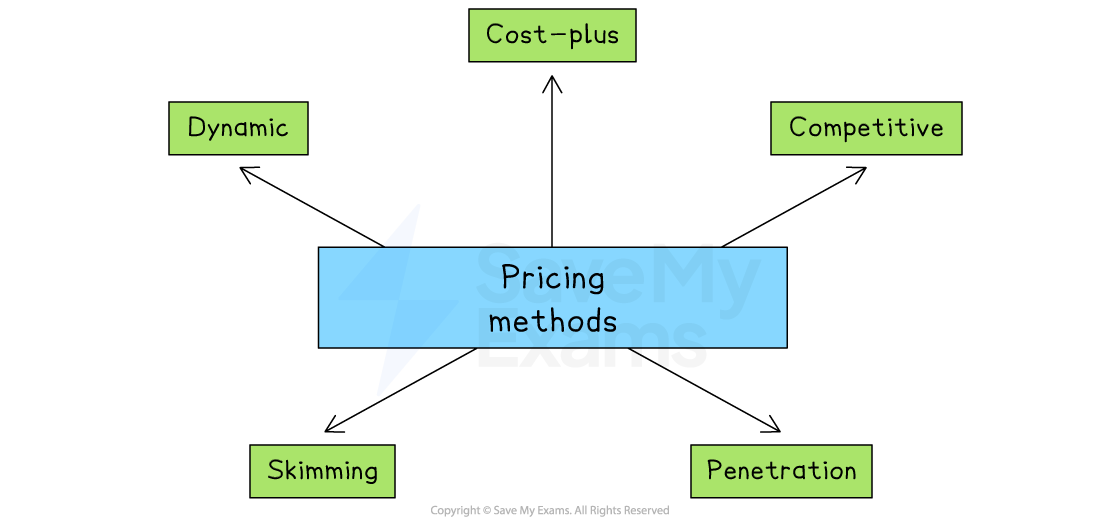Syllabus Edition
First teaching 2025
First exams 2027
Price (Cambridge (CIE) IGCSE Business): Revision Note
Exam code: 0450, 0986 & 0264, 0774
Introduction to pricing methods
Choosing the right pricing method is essential for a business to be profitable, competitive, and successful in the long run
By understanding their customers, competitors and costs, businesses can set prices that maximise sales revenue and profits
Pricing can play a significant role in the market positioning of the brand and help a firm to compete with rivals
Pricing methods

Cost-plus pricing
The business calculates the cost of production and then adds a markup to determine the final price
The markup covers the cost of production plus the business's desired profit margin
This pricing strategy is simple and is commonly used by manufacturers that produce standardised goods, e.g., washing machines
Advantages | Disadvantages |
|---|---|
|
|
Competitive pricing
Competitive pricing is when a business sets its prices based on what its competitors are charging
It is common in markets where there are many similar products, and customers can easily compare prices
The goal is to attract or keep customers by offering prices that match or beat rivals
Advantages | Disadvantages |
|---|---|
|
|
Examiner Tips and Tricks
Watch out for confusing cost-plus pricing with competitive pricing – cost-plus is based on adding a mark-up to costs, while competitive depends on rivals’ prices
Penetration pricing
The business sets a low price for a new product or service when it is first introduced
This is effective when a business wants to quickly capture market share and attract price-sensitive customers, e.g., many new perfumes launch using penetration pricing
Once they have enough customers, the business will start to raise the price
Advantages | Disadvantages |
|---|---|
|
|
Skimming
Setting a high price for a new product or service when it is first introduced to the market
The price is gradually lowered to ensure sales continue
Advantages | Disadvantages |
|---|---|
|
|
Dynamic pricing
Continuously adjusting prices in real time to reflect demand, supply and other conditions
Uses algorithms and data, such as time of day, inventory levels and competitor prices
For example, Uber raises fares during times of peak demand and lowers them when demand falls
Advantages | Disadvantages |
|---|---|
|
|
Recommending a suitable pricing method
A business should carefully consider a range of factors when deciding on an appropriate pricing method
Factors to consider when choosing a pricing method
Factor | Explanation | Example |
|---|---|---|
USPs and differentiation |
|
|
Technology |
|
|
Level of competition |
|
|
Strength of the brand |
|
|
Stage in the product life cycle |
|
|
Costs and the need to make a profit |
|
|
Case Study
Pricing Methods for the Launch of Fyool
FyooL is a New Zealand-based start-up preparing to launch a range of healthy, ready-to-drink protein shakes aimed at active young adults

The health drinks market is highly competitive, and FyooL's team is considering different pricing methods
Each key member of the business has their own view
Pricing method | Supported by | Reason |
|---|---|---|
Penetration pricing | Marketing Manager |
|
Cost-plus pricing | Finance Manager |
|
Skimming | Product Development Lead |
|
Recommendation:
FyooL should choose penetration pricing for its product launch
As a new brand entering a competitive market, it needs to attract attention quickly
The Marketing Manager’s view is the most realistic for building awareness and gaining loyal customers early on
Once demand grows and the brand becomes known, FyooL can review its pricing and possibly increase it

Unlock more, it's free!
Did this page help you?